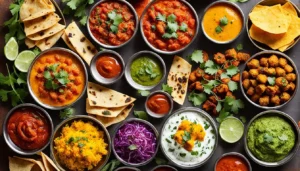Wales, a land of rolling hills, ancient castles, and rich traditions, is home to some of the most fascinating New Year customs in the world. As the calendar turns, the Welsh people celebrate with a unique blend of music, folklore, and peculiar rituals that have stood the test of time. In this article, we’ll delve into the captivating world of Welsh New Year traditions, exploring the enchanting harmony singing and the intriguing custom involving horse skulls. Let’s embark on a journey through Welsh culture and discover how these elements come together to create a truly unforgettable celebration.
Welsh New Year: Welcoming Calennig
The Welsh New Year, known as “Calennig” (derived from the Latin word “kalends,” meaning the first day of the month), is a time of jubilation and hope. While it shares similarities with New Year celebrations around the world, Calennig has its own distinct flavors that set it apart.
The Significance of January 1st
In Wales, January 1st marks not only the beginning of a new year but also the continuation of age-old traditions. The day is filled with various customs, from visiting friends and family to participating in community events. It’s a time when the Welsh people come together to reflect on the past year and look forward to the possibilities that lie ahead.
New Year’s Eve in Wales
Known as “Nos Galan” in Welsh, New Year’s Eve is celebrated with great enthusiasm across the country. Cities like Cardiff and Swansea host large gatherings, complete with fireworks displays and live music performances. However, it’s in the smaller towns and villages where the true essence of Welsh New Year traditions can be experienced.
The First Foot Tradition
Similar to Scotland, Wales has its own version of the “first foot” tradition. It’s believed that the first person to cross the threshold of a home after midnight on New Year’s Eve can bring good or bad luck for the coming year. Traditionally, a dark-haired man is considered the luckiest first foot, while a red-haired woman is thought to bring misfortune.
Harmony Singing: The Soul of Welsh New Year
One of the most captivating aspects of Welsh New Year celebrations is the tradition of harmony singing. This musical practice, deeply ingrained in Welsh culture, takes on special significance during the holiday season.
The Welsh Choral Tradition
Wales is often referred to as the “Land of Song,” and for good reason. The country has a rich history of choral music, with male voice choirs being particularly prominent. During New Year celebrations, this tradition comes to the forefront, with both formal and informal singing events taking place across the nation.
Plygain: The Christmas and New Year Singing Service
Plygain is a unique Welsh tradition that combines religious observance with musical performance. These early morning services, traditionally held between 3 am and 6 am, feature unaccompanied harmony singing of carols and hymns. While Plygain is primarily associated with Christmas, in some areas, it extends into the New Year period.
The Role of Harmony Singing in Calennig
During Calennig celebrations, harmony singing takes on various forms. From impromptu performances in pubs and homes to organized community events, the sound of multiple voices blending in perfect harmony is a hallmark of the Welsh New Year experience.
Popular Songs for New Year
Several traditional Welsh songs are closely associated with New Year celebrations. “Blwyddyn Newydd Dda” (Happy New Year) is a popular choice, as is “Hen Wlad Fy Nhadau” (Land of My Fathers), the Welsh national anthem. These songs, sung in harmony, create a powerful sense of community and national pride.
The Healing Power of Harmony
Research has shown that group singing can have numerous health benefits, including reducing stress and improving mood. During the often-reflective time of New Year, the tradition of harmony singing serves not only as entertainment but also as a form of communal therapy, bringing people together and fostering a sense of belonging.
Mari Lwyd: The Tradition of the Grey Mare
Perhaps the most intriguing and unusual aspect of Welsh New Year celebrations is the Mari Lwyd tradition. This custom, involving a horse skull mounted on a pole, is a prime example of how ancient folklore has been preserved in modern Welsh culture.
The Origins of Mari Lwyd
The exact origins of Mari Lwyd are unclear, with some scholars tracing it back to pre-Christian, Celtic traditions. The name “Mari Lwyd” translates to “Grey Mare” in English, though there are various interpretations of its meaning and significance.
The Mari Lwyd Procession
The Mari Lwyd tradition involves a group of people parading from house to house with a horse’s skull mounted on a pole and draped with a white sheet. The skull’s jaw is often designed to snap, adding to its eerie appearance. The procession is typically accompanied by musicians and other costumed characters.
The Ritual of Pwnco
Upon arriving at a house, the Mari Lwyd group engages in a ritual known as pwnco. This involves a battle of wits through improvised verse, with the Mari Lwyd party trying to gain entry to the house and the occupants attempting to deny them. The exchange is often humorous and can last for several minutes.
Symbolism and Interpretation
Various interpretations exist regarding the symbolism of Mari Lwyd. Some view it as a representation of the old year giving way to the new, while others see it as a way of warding off evil spirits. Regardless of its original meaning, the Mari Lwyd tradition has become a beloved part of Welsh New Year celebrations.
Regional Variations
While Mari Lwyd is most commonly associated with South Wales, particularly Glamorgan and Gwent, variations of the tradition can be found across the country. In some areas, the horse skull is replaced with other animals or even completely different characters.
The Interplay of Traditions
What makes the Welsh New Year truly special is the way these various elements – Calennig, harmony singing, and Mari Lwyd – intertwine to create a rich tapestry of cultural expression.
Music and Mari Lwyd
The Mari Lwyd procession is often accompanied by traditional Welsh music, including harmony singing. The juxtaposition of the eerie horse skull with beautiful vocal harmonies creates a unique atmosphere that encapsulates the blend of the mystical and the melodious in Welsh culture.
Community and Tradition
Both harmony singing and the Mari Lwyd custom rely heavily on community participation. These traditions bring people together, strengthening social bonds and fostering a sense of shared cultural identity as the new year begins.
Past and Present
The preservation of these ancient customs alongside modern New Year celebrations illustrates Wales’s ability to honor its heritage while embracing the present. It’s not uncommon to see Mari Lwyd processions in city centers or hear traditional harmony singing at contemporary music events during the New Year period.
Celebrating Welsh New Year in the Modern Era
While these traditions have deep historical roots, they continue to evolve and adapt to contemporary Welsh society.
Revival and Preservation Efforts
In recent years, there has been a concerted effort to revive and preserve Welsh New Year traditions. Cultural organizations, schools, and community groups play a crucial role in ensuring that customs like Mari Lwyd and harmony singing are passed down to younger generations.
Tourism and Cultural Exchange
The unique nature of Welsh New Year celebrations has made them a draw for tourists from around the world. This influx of visitors has helped to reinvigorate local economies and has led to a renewed appreciation of Welsh cultural heritage among locals.
Adapting to Change
Like all living traditions, Welsh New Year customs have adapted to changing times. For instance, some Mari Lwyd groups now use social media to announce their routes and engage with their communities. Similarly, harmony singing events are often live-streamed, allowing people from around the world to participate virtually.
Balancing Tradition and Innovation
As Wales moves further into the 21st century, there’s an ongoing dialogue about how to maintain the essence of these traditions while allowing them to evolve. This balance between preservation and innovation ensures that Welsh New Year celebrations remain relevant and meaningful to contemporary audiences.
Conclusion
The Welsh New Year, with its unique blend of harmony singing and the intriguing Mari Lwyd tradition, offers a fascinating glimpse into the rich cultural tapestry of Wales. These customs passed down through generations, continue to captivate both locals and visitors alike, providing a connection to the past and a celebration of Welsh identity.
As we’ve explored in this article, the interplay between music, folklore, and community spirit creates a New Year experience unlike any other. From the soul-stirring harmonies of Welsh choral singing to the mysterious allure of the Mari Lwyd procession, these traditions embody the warmth, creativity, and resilience of the Welsh people.
Whether you’re planning a visit to Wales during the New Year period or simply interested in learning more about global cultural practices, the Welsh New Year celebrations offer a unique and enriching experience. They remind us of the power of tradition to bring people together, foster a sense of belonging, and create lasting memories as we welcome each new year.
So, as the calendar turns and a new year dawns, why not consider immersing yourself in the magic of a Welsh New Year? You might just find yourself swept away by the haunting melodies of harmony singing or caught up in the mystical energy of a Mari Lwyd procession. After all, there’s no better way to start the year than by embracing the rich cultural heritage of the Land of Song.
Blwyddyn Newydd Dda! (Happy New Year!)






